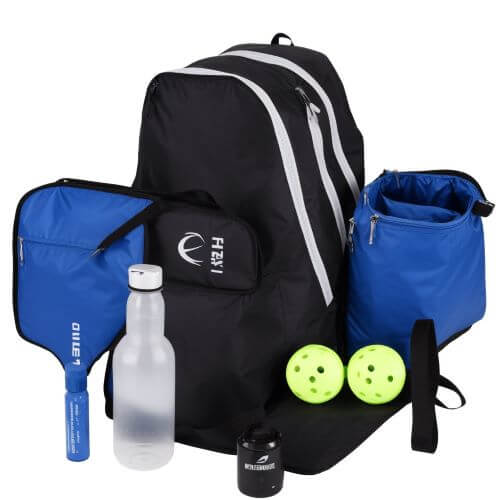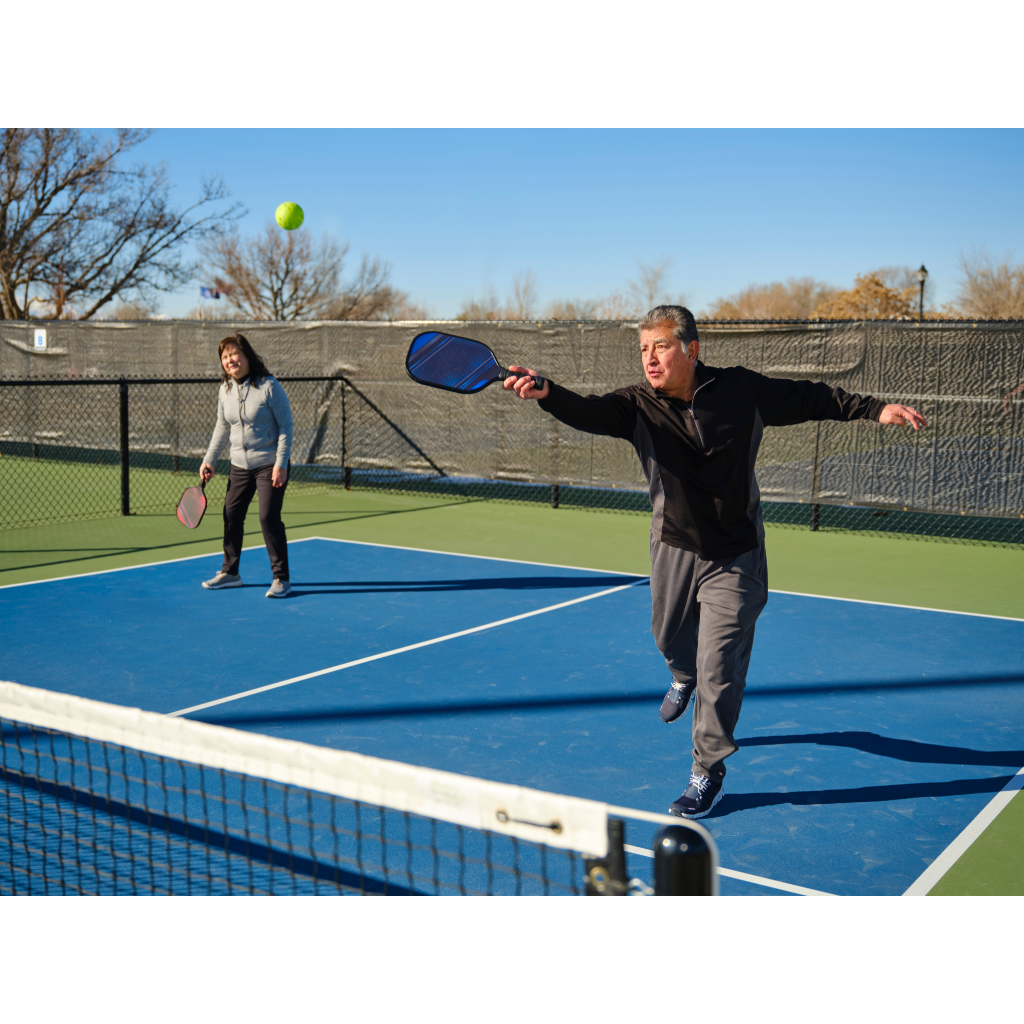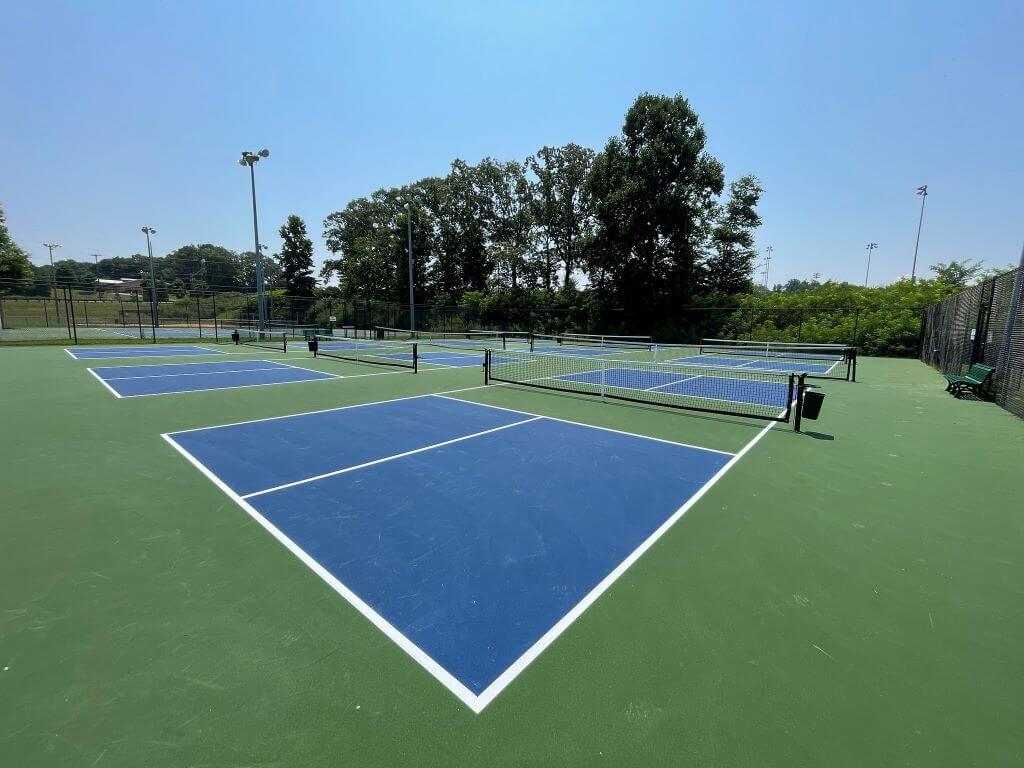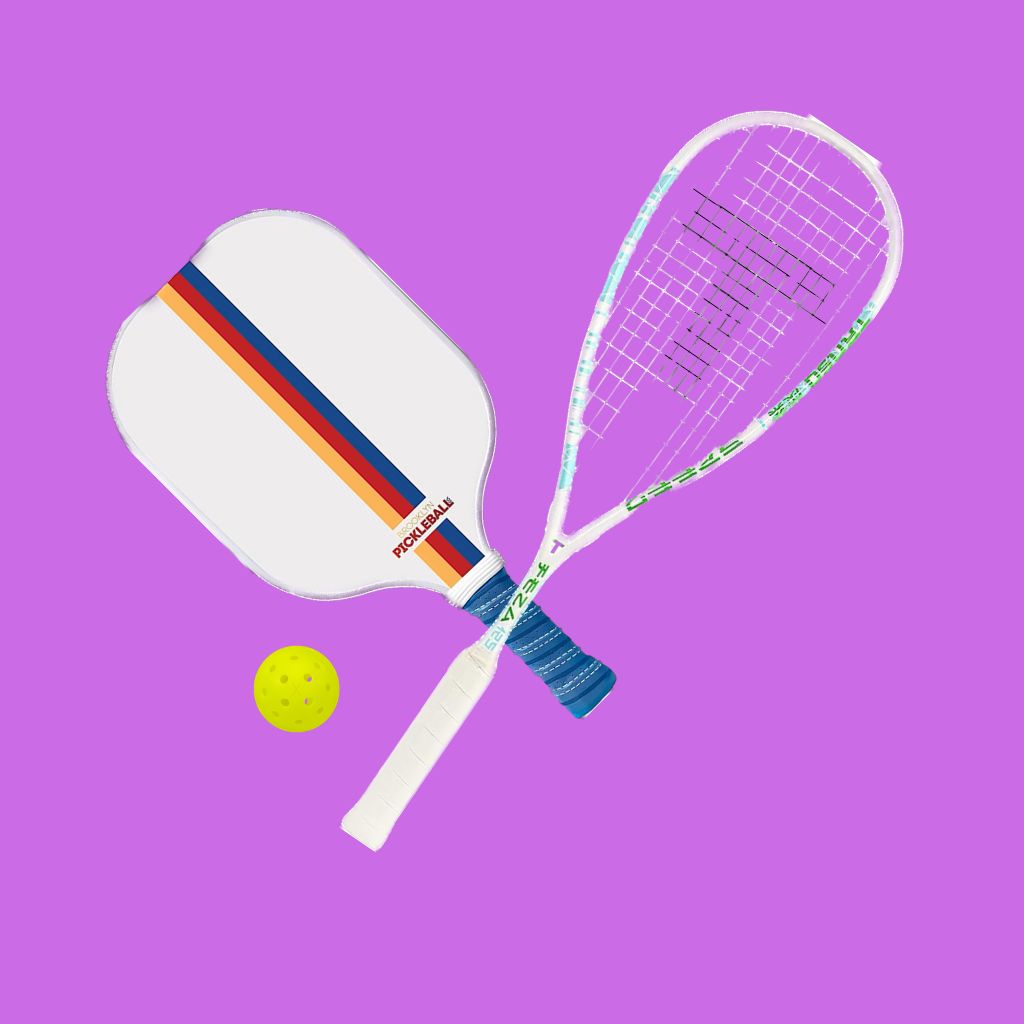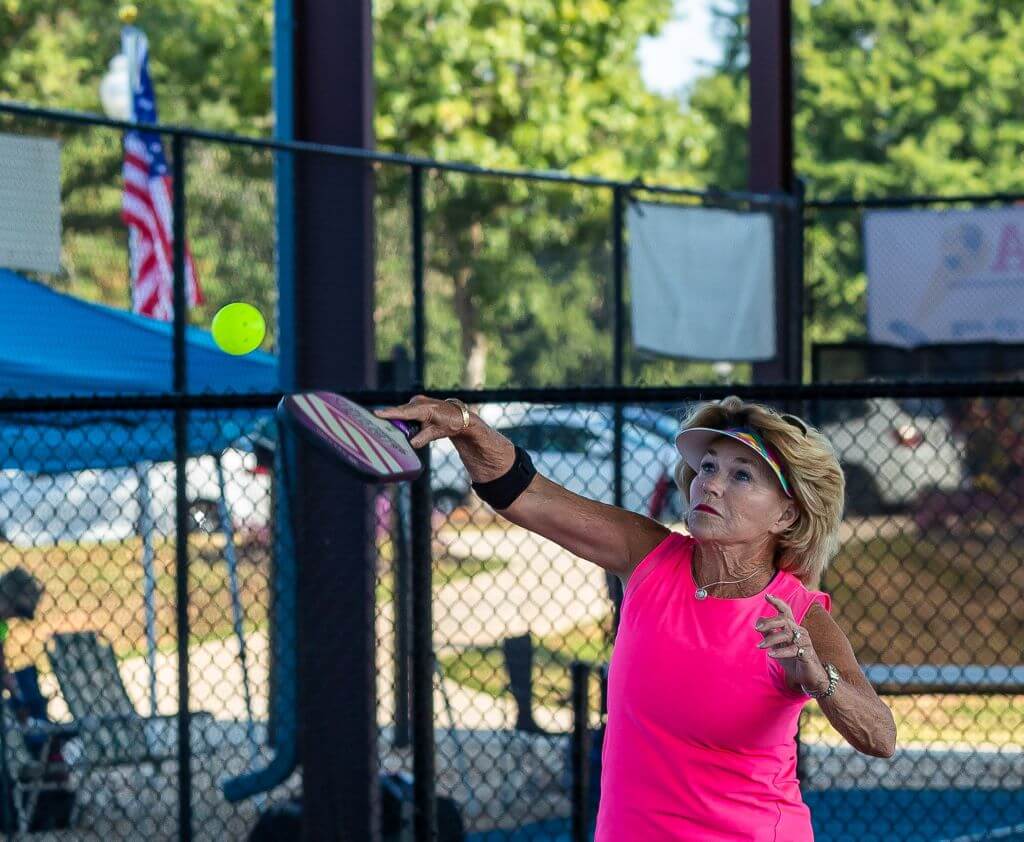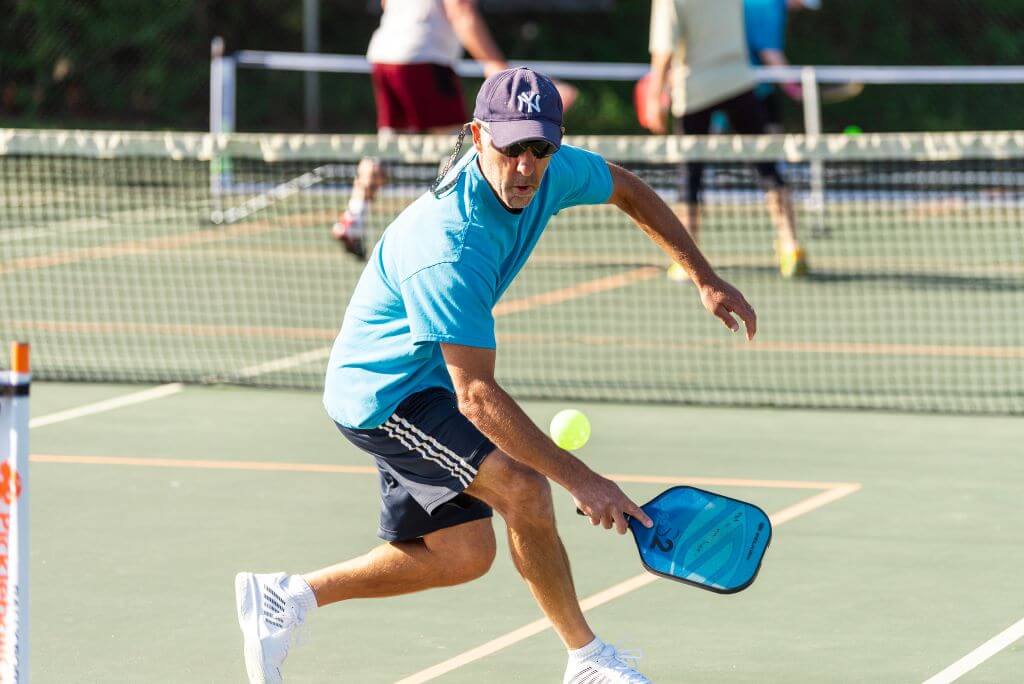Pickleball and pingpong are two popular racket sports played around the world. Although they are different in many ways, pickleball vs pingpong are often compared due to their similar gameplay.
Both sports require quick reflexes, good hand-eye coordination, and strategic thinking. They also share similar looking equipment, like the ball and paddle, and even share rules like serving the ball diagonally.
In this article, we will explore the key differences between these two sports, including all the nitty-gritty details of the equipment, court dimensions, and rules. We will also discuss the benefits of playing pickleball and pingpong and why you should give these sports a try.
Game Equipment
If you’re a pickleball and pingpong player, then you know just how different these two games can be—especially at the highest level. Two things they have in common though, more than tennis and pickleball, is the use of paddles and balls.
Here’s a breakdown of the game equipment used in each sport, as well as some key similarities and differences:
| Game Equipment | Pickleball | Pingpong |
| Paddles | Typically made of wood or composite materials, with a relatively large surface area and short handle | Made of wood or composite materials, with a smaller surface area and longer handle |
| Balls | Wiffle-style plastic ball, with large holes and lightweight design | Small, lightweight plastic ball, with a smooth surface and high bounce |
| Nets | Similar to a tennis net, but shorter in height | A table with a low net dividing the playing area |
| Other accessories | Court lines, shoes, and protective eyewear | Table tennis balls, nets, and protective eyewear |
As you can see, while both games use paddles and balls, the specifics of each are quite different. Pickleball paddles are larger and wider, with a shorter handles, while pingpong paddles are smaller with a longer handles. The balls used in each game also vary significantly, with pickleball using a lightweight, plastic wiffle ball with holes, while pingpong uses a small, smooth-surfaced plastic ball.
Additionally, pickleball is typically played on a court with specific lines and requires players to wear court shoes and protective eyewear, while pingpong is played on a table and requires specialized table tennis balls and nets.
Court and Game Setup
When it comes to pickleball and pingpong, both sports have their own unique court and game setup. In this article, we’ll discuss the court size and layout for each sport, as well as the net height, markings, and other features of the court. We’ll also compare the differences in the game setup for both sports.
First, let’s take a look at the court size and layout for pickleball vs pingpong. Pickleball is typically played on a court that is 20 feet wide and 44 feet long. The court is divided into halves by a net that is 36 inches high at the sidelines and 34 inches high at the center. The court also has a 7-foot no-volley zone on either side of the net, which players cannot enter during play.
Pingpong, on the other hand, is played on a table that is 9 feet long and 5 feet wide. The table is divided into halves by a net that is 6 inches high. Players must stay on their side of the table during play and cannot touch the net or reach over to the other side.
Similarities and Differences Between the Court and Game Setup for Pickleball vs Pingpong
| Court and Game Setup | Pickleball | Pingpong |
| Court size | 20 ft x 44 ft | 9 ft x 5 ft |
| Net height | 36 in (sidelines), 34 in (center) | 6 in |
| No-volley zone | Yes | No |
| Stay on own side | Yes | Yes |
| Touching the net | No | No |
| Reach over net | No | No |
Rules and Scoring
Pickleball and pingpong have their own sets of rules and scoring systems that players need to follow in order to play the game correctly. Here’s a breakdown of the key rules and scoring mechanics for each sport:
Pickleball
- Players serve the ball diagonally to the opponent’s court and must keep at least one foot behind the baseline while serving.
- The serve must clear the net and land in the opposite service court.
- After the serve, players must hit the ball back and forth, with each side allowed one bounce before hitting it back to the other side.
- Points are scored when the opposing team fails to return the ball or hits it out of bounds.
- The first team to score 11 points, with a two-point lead, wins the game.
- Unique rule: When serving, the ball must be hit underhand and the paddle must be below the player’s waist.
Pingpong
- Players take turns serving the ball, with the serve alternating between sides after every two points.
- The serve must be diagonal and the ball must bounce once on the server’s side of the table before crossing the net.
- After the serve, players must hit the ball back and forth, with each side allowed one bounce before hitting it back to the other side.
- Points are scored when the opposing team fails to return the ball or hits it out of bounds.
- The first player/team to score 11 points, with a two-point lead, wins the game.
- Unique rule: When serving, the ball must be thrown at least 6 inches in the air before being hit and it must be struck behind the table’s end line.
In terms of gameplay mechanics, pickleball and pingpong can be played in both singles and doubles. Additionally, pingpong players are allowed to touch the table with their free hand, while pickleball players are not allowed to touch the net or step into the non-volley zone (also known as the kitchen) during play.
Similarities and Differences in Aspect Between Pickleball vs Pingpong
| Aspect | Pickleball | Pingpong |
| Serve | Diagonal | Diagonal |
| Bounce rule | One | One |
| Scoring | 11 points, 2 point lead | 11 points, 2 point lead |
| Serve mechanics | Underhand, below waist | Thrown, behind end line |
Gameplay and Strategy
Pickleball and pingpong are both games that require quick reflexes and strategic thinking. Pickleball can be played in either singles or doubles, which changes the gameplay and strategy. In pingpong, players typically play singles but can also play doubles. Both sports require good hand-eye coordination and strategic thinking, with players using a combination of offensive and defensive strategies to gain an advantage.
In pickleball, players try to keep the ball low and close to the net, while doubles players use a variety of shots to create openings. In pingpong, players use offensive and defensive strategies and spin to manipulate the ball’s trajectory. To excel at both sports, players must master skills such as footwork, ball control, and shot selection, and in pickleball doubles, players must communicate effectively. In pingpong, players must anticipate their opponent’s next move.
Similarities and Differences in Gameplay and Strategy Between Pickleball vs Pingpong
| Gameplay and Strategy | Pickleball | Ping Pong |
|---|---|---|
| Basic Gameplay | Players hit a perforated ball over a net and aim to land it within the opposing team’s court. The ball can only bounce once on each side before being returned. | Players hit a small, lightweight ball over a net and aim to land it on the opposing side without the ball bouncing twice. |
| Styles of Play | Players can choose to play singles or doubles. The game involves quick and explosive movements, with emphasis on shot placement and teamwork. | Typically played in singles or doubles. The game involves quick reflexes and precise shot placement, with less emphasis on teamwork. |
| Required Skills | Good hand-eye coordination, quick reflexes, and agility. Players must be able to anticipate and react to their opponent’s shots. | Excellent hand-eye coordination, precise control, and quick reflexes. Players must be able to react quickly to their opponent’s shots and anticipate their next move. |
| Differences | The larger court and slower pace of play make it easier for beginners to learn the game. There is more emphasis on teamwork and shot placement. | The smaller court and faster pace of play require quick reflexes and precise control. There is less emphasis on teamwork and more focus on individual skill. |
Health Benefits and Accessibility
Both pickleball and pingpong are low-impact sports that offer physical and mental health benefits. Pickleball is great for improving cardiovascular health and building muscular strength and endurance, while pingpong helps to improve hand-eye coordination, balance, reflexes, and mental agility. Both sports are accessible, can be played indoors or outdoors, and offer competitive opportunities for players of all ages and skill levels.
Pickleball is particularly beneficial for cardiovascular health and building stamina, due to its quick movements and changes in direction. The back-and-forth nature of the game also improves hand-eye coordination, balance, and reflexes. Similarly, pingpong helps to improve upper body strength and cardiovascular health, as well as mental agility and alertness. Both sports offer opportunities for players of all skill levels to improve and compete, making them a great option for people who want to stay active and healthy.
Similarities and Differences Between Pickleball vs Pingpong in Terms of Health Benefits, Accessibility, and Skill Levels
| Health Benefits | Accessibility | Skill Levels | |
| Pickleball | Improves cardiovascular health, builds muscular strength and endurance, improves hand-eye coordination, balance, and reflexes | Highly accessible, can be played both indoors and outdoors, requires relatively little space and equipment | Suitable for players of all ages and skill levels, offers a range of competitive opportunities |
| Pingpong | Improves hand-eye coordination, balance, and reflexes, builds upper body strength, improves cardiovascular health, and mental agility and alertness | Highly accessible, can be played both indoors and outdoors, requires relatively little space and equipment | Suitable for players of all ages and skill levels, offers a range of competitive opportunities |
Conclusion
Pickleball and pingpong are both enjoyable sports that offer a range of physical and mental health benefits. While pickleball is typically played in doubles and pingpong in singles, both sports require hand-eye coordination, agility, and strategic thinking. The equipment for both sports varies slightly, with pickleball paddles being larger and pingpong balls being smaller and lighter.
Players of all ages and skill levels can participate in both sports, and each offers unique gameplay mechanics and rules. Pickleball is known for its social and community-oriented atmosphere, while pingpong can be a fast-paced and intense game.
Ultimately, the decision on which sport is better or more enjoyable to play is up to personal preference. We encourage readers to try both sports and see which one they enjoy the most. Regardless of which sport you choose, both offer an excellent way to stay active, have fun, and improve your physical and mental well-being.


